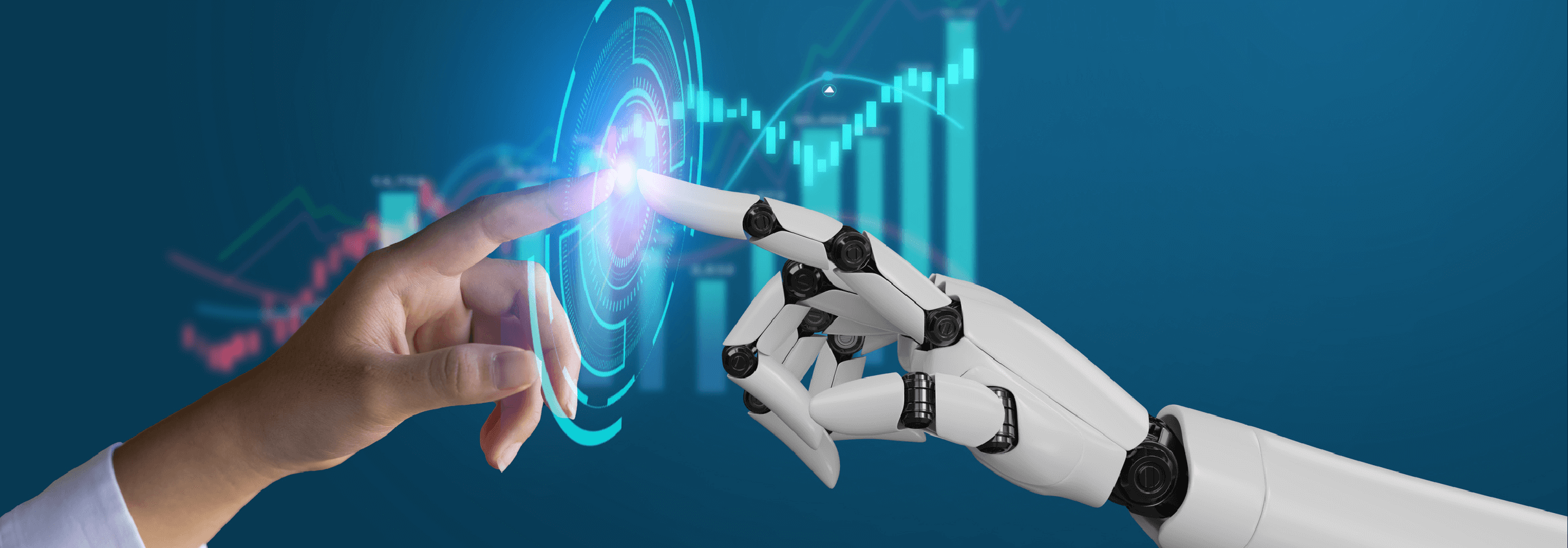To create an efficient growth model you need to develop a repeatable, scalable motion. And know your ‘Why’. Why should your buyers care about your company? Why did you create this product and what problems does it solve? Understanding your ‘Why’ will be the catalyst to your entire go-to-market strategy.
Luckily, marketers have started to see a shift in growth at all costs to efficient growth based on data-driven, scalable marketing. There are big trends in the market supporting this shift — most of which focus on how to drive predictable pipeline and revenue generation with the adoption of technology, data, and prioritization of the buyer’s experience.
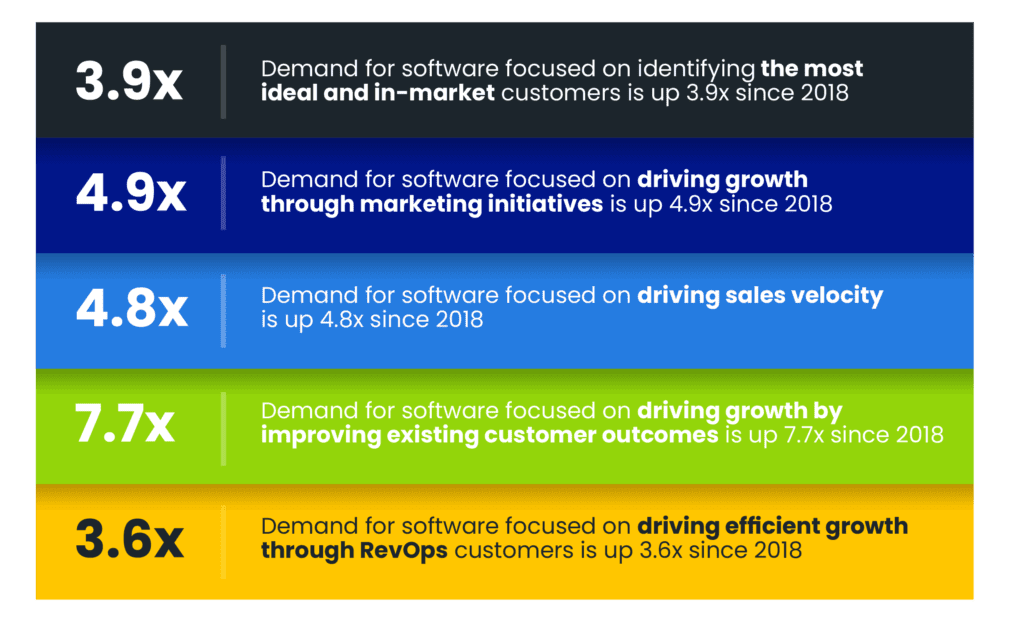
The key to driving efficient growth is to orchestrate well-timed and personalized experiences that meet the needs of the prospective buyer – where they are in their journey – reduce friction and build relationships. There are two key marketing pillars required to drive efficient growth: content and experience. Read on to see exactly why without investment in these two areas it will be tough to develop a repeatable, scalable motion.
Pillar 1: Content
66% of marketers
are devoting more budget and resources to content
this year than the last – according to HubSpot.
Content is more imperative than ever. And you need to have it for every stage of the buyer journey. But, your content can’t just be content for the sake of content. You need to establish the right message for the right people at each stage of the buyer’s journey that maps back to your “Why”.
Gartner does a great job illustrating how complex the B2B buyer’s journey is and why you need to ensure you have the right content to answer questions across every channel and stage. In fact, the research found that customers who perceived the information they received from suppliers to be helpful were 2.8 times more likely to experience a high degree of purchase ease, and three times more likely to buy a bigger deal with less regret.
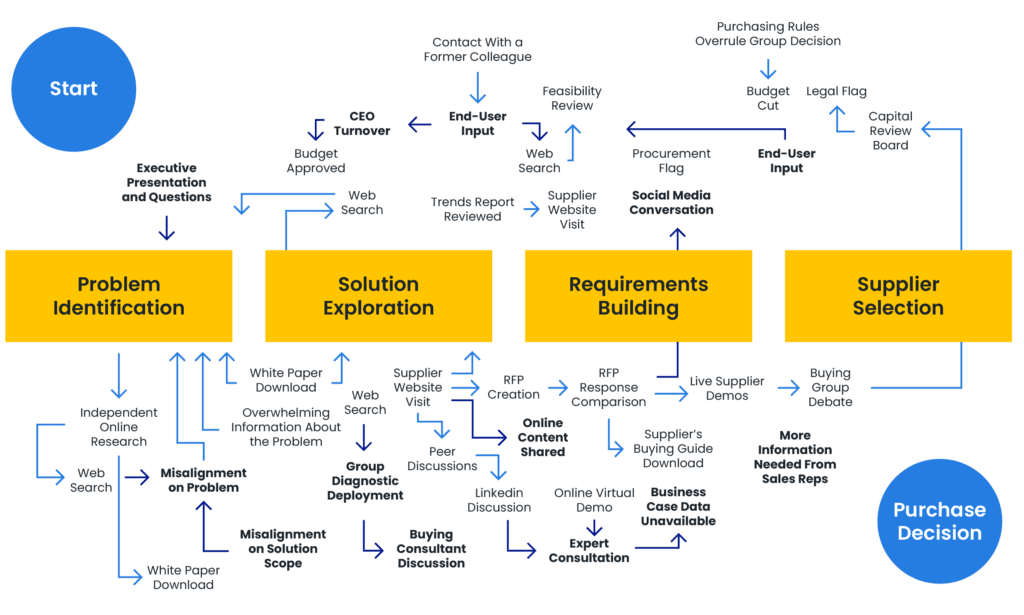
There are three core components to developing a content strategy that drives efficient growth.
Step 1: Identify topics and keywords
Understand what your audience cares about by looking at the data. What are they searching for at each stage that’s relevant to your “Why”. It’s really important to dig into keywords you are tracking and prioritizing. Your keywords will be used for several things like, capturing intent data, SEO strategy, and ultimately developing your content pillars. Remember the old adage “Crap-in, crap out”? Well it definitely holds true here, so take the time to get your keywords right!
- What words, phrases etc. Start by thinking about what you’d seach for if you were one of your persona’s
- Interview customers and talk to other people your company
- Once you get a long list, do some research to see what you’re missing.
Step 2: Establish content pillars
Leveraging intent data provides great insight into what your target accounts are interested in, especially in relation to your product and solution offerings. If you don’t have an intent data provider, no problem! Go back to your keyword list and make some assumptions based on what you know. You could also try a free tool or Google Search Console to see what keywords users used to get to your website.
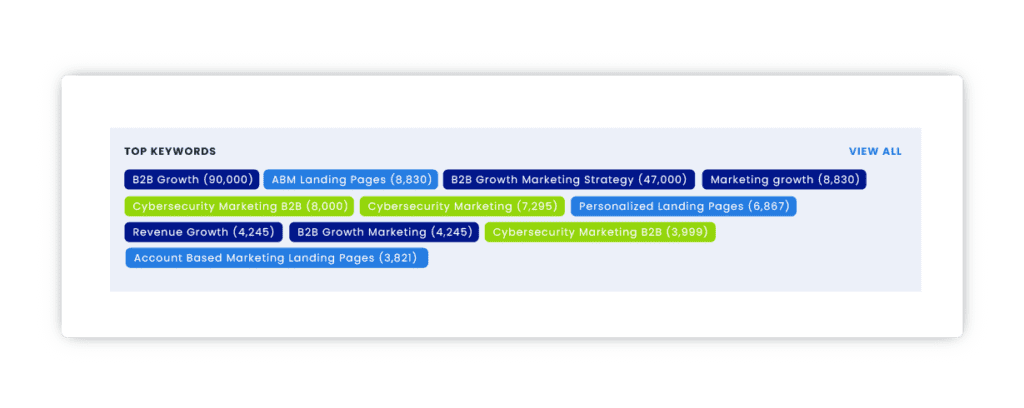
Once you know your top keywords and topics you need to tie them back to your product and value prop and establish “Content Pillars” or themes.
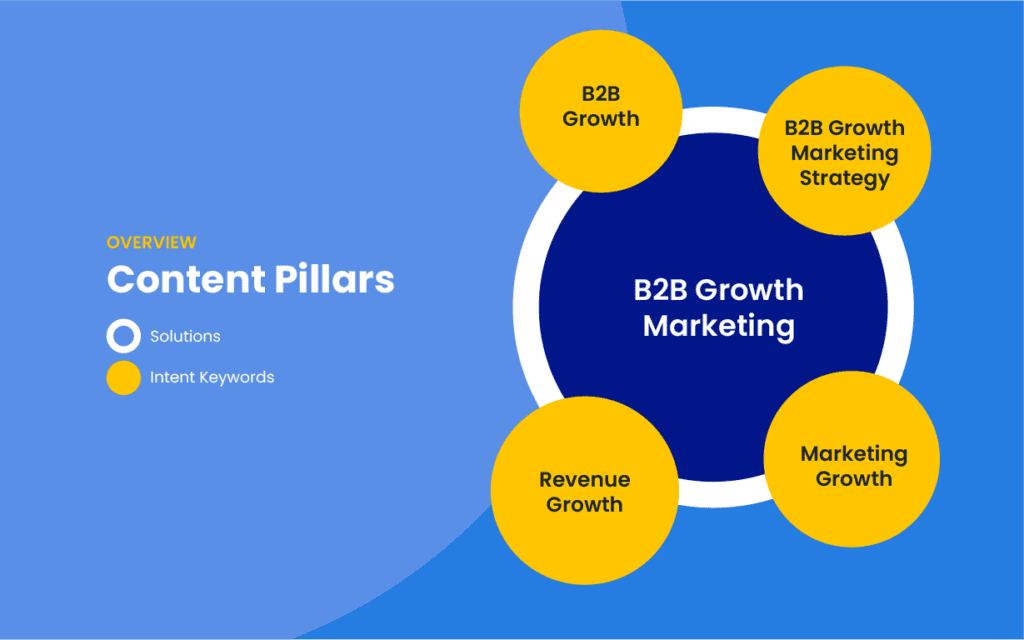
In this example, you can see that the organization offers B2B growth marketing solutions, and that their target accounts are showing intent for keywords such as ‘B2B Growth’ and ‘Marketing Growth.’ Do this exercise for your business and develop pillars that can support both your inbound and ABM strategies.
Step 3: Create a content matrix
Now that you have your content pillars you will need to map out the different types of content you need for each stage in the buyer’s journey, personas, and channels.
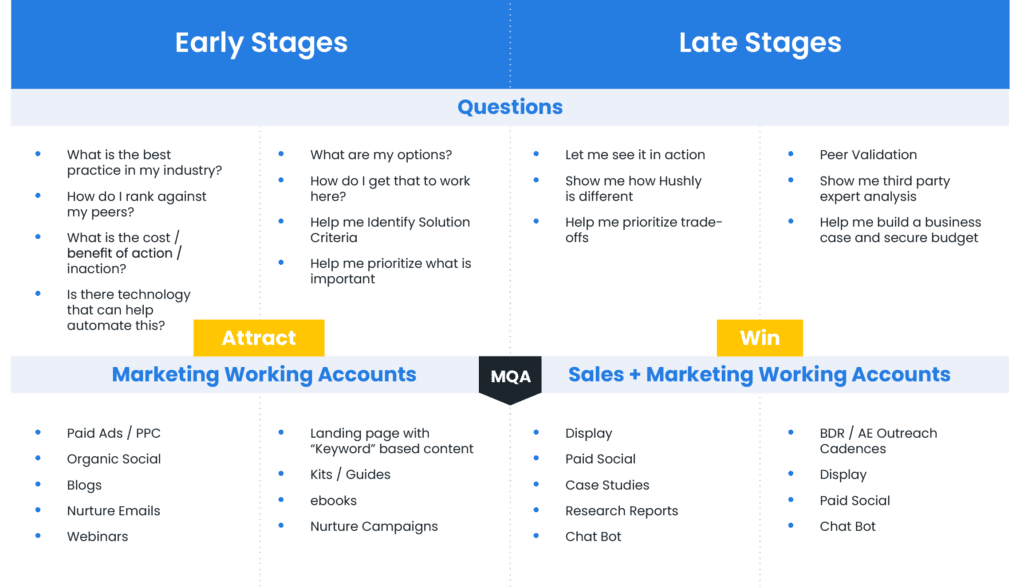
Pro Tip: Most content can be turned into multiple formats with varying degrees
of depth according to the persona and stage in the buyers journey.
Hopefully, you have existing content ou can leverage, but now is a good time to inventory what you have and find the gaps you have. A lot of businesses tend to have more top of funnel content but not enough for the mid and bottom of funnel.
The best thing about having a content matrix is when you are planning marketing campaigns you can easily pull it up to see what you have to leverage and where you need to make more investments.
Pillar 2: Experience
“To put it bluntly, if a buyer doesn’t like the way you
interact with them, they will go somewhere else.”
– Sangram Vajre, Founder at GTM Partners
Every step in your buyer’s journey is an opportunity to delight your prospects and make doing business with you a pleasure. That’s why it’s so important to examine each step and think about how you can better enable your buyers. Where are the points of friction and how can you alleviate them? Make every interaction
purposeful and as frictionless as possible!
The best way to understand what experiences you need is to map the content you have to the touchpoints and channels you plan to deliver it on. This should allow you to easily identify what experience you need to build.
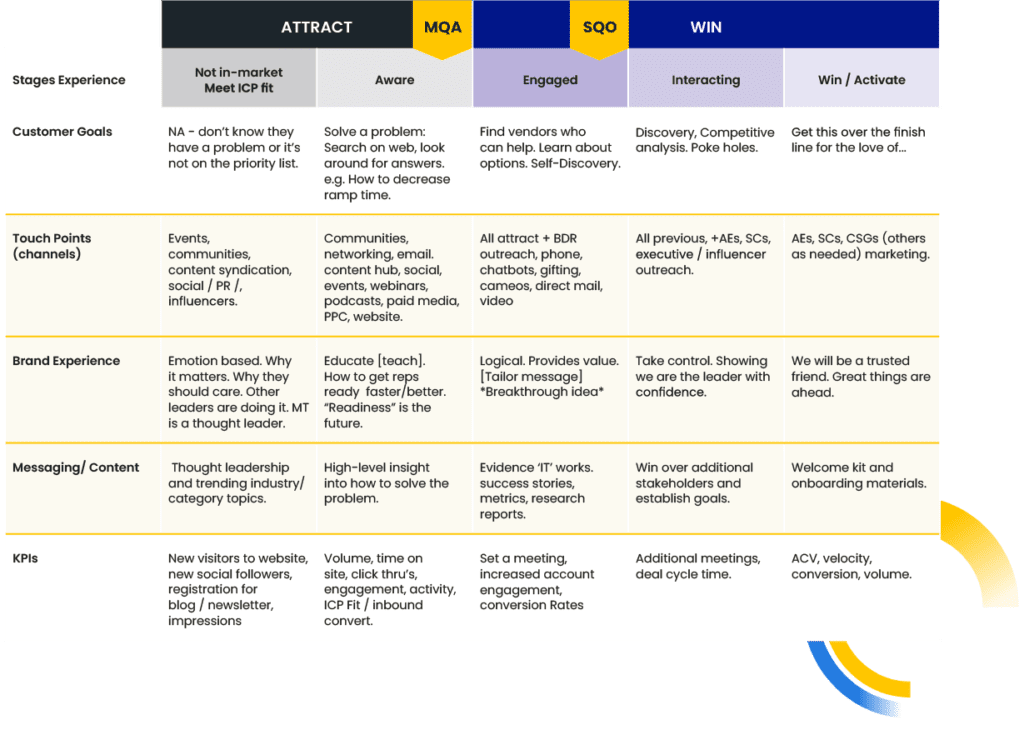
Then from there, you should look to the following areas to improve the experience.
- Use intent data.
In order to understand what your audience is looking for and what buying stage they are in you need to know what they are doing behind the scenes. - Inspect what you expect.
All of your paid and earned channels should be driving your audience to your website. Evaluate what your audience is seeing when they get there. - Create dynamic landing pages.
Using the content matrix and taxonomy you developed plus advanced technology like Hushly, you can dynamically serve up a content experience that is highly relevant to your audience. - Ungate content & utilize smart forms.
These days, most of your content should be UNgated! Be sure to consider the type of content you are publishing before putting it behind a form. If you do have to use a form don’t ask for information you don’t need. - Be sticky!
After you’ve done all the hard work of getting someone to your landing page keep them there! Perscribe content to read next and answer questions on the spot with live chat. Make sure people are finding what they are looking for and more when they are there.
We know it can be intimidating to put together an experience that is both repeatable and scalable. The good news is, there is technology and data to support us in making it happen. As we think about the buying experience, we like to design always-on programs that are in sync with your buyers needs.
It is our job as marketers and sales teams to meet potential buyers where they are in their journey with helpful, relevant information. Leverage content and reduce friction to make it easy for buyers to discover what they need to make an informed buying decision.
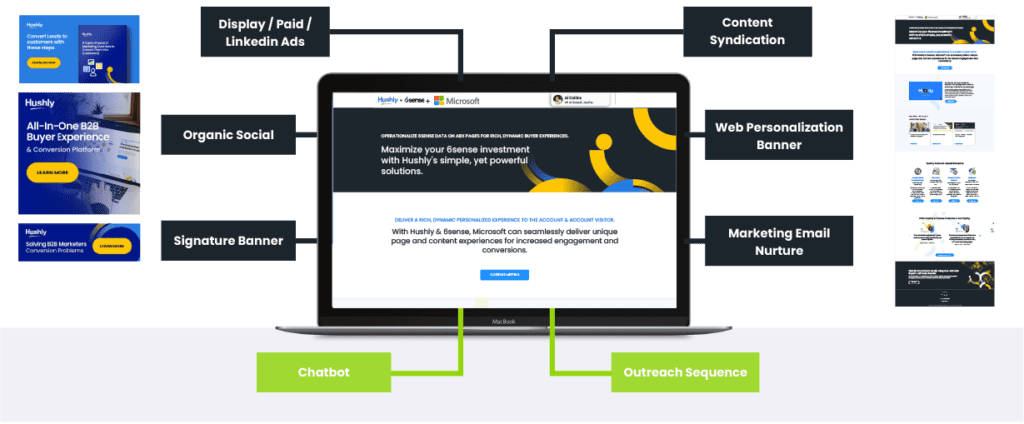
By leveraging tools like Demandbase, RollWorks, 6Sense Zoominfo or Bombora for intent data and buyer experience and conversion platforms like Hushly you can dynamically personalize your website, ABM pages, and campaign destinations in real-time. You can personalize things like:
- Showing target account logos
- Copy and graphics
- Videos
- Swap out content by persona, account, industry, etc.
- Providing the right account reps contact info
- Messaging by stage of the journey
Investing in the experience does require the right resources and technology. But once you have it in place, you really can build a single page and scale it to thousands of your target accounts. This is really where you start to see efficiencies in your marketing efforts.
Pulling it all together
Using the right technology coupled with a strong content strategy allows you to create a relevant, and scalable content
experience that will both educate and move prospects along in the buyer’s journey faster and more efficiently.
Without a content strategy and the right technology, the chances of a disconnected and inconsistent experience are high. However, when creating a content strategy, the tendency of many businesses is to create a lot of content and put it all out there (behind a gate) for prospects to consume after they give you their contact information. And then send a BDR, or Sales Executive after them to try and get a meeting. This experience creates low conversion rates, missed revenue targets, and poor brand perception.
Increasingly, we are learning that prospects are looking to simply figure out how to do things better, and get results. They buy products with the result in mind. They do research to uncover what their options are and how they work. They are pulled in many directions so when it’s hard to find what they are looking for they will bounce and go somewhere else.
Marketing teams that create meaningful, personalized content experiences, in a repeatable, scalable way – will win the hearts, minds, and wallets of the customer. It’s time to create a better buying experience in the name of efficient growth!


